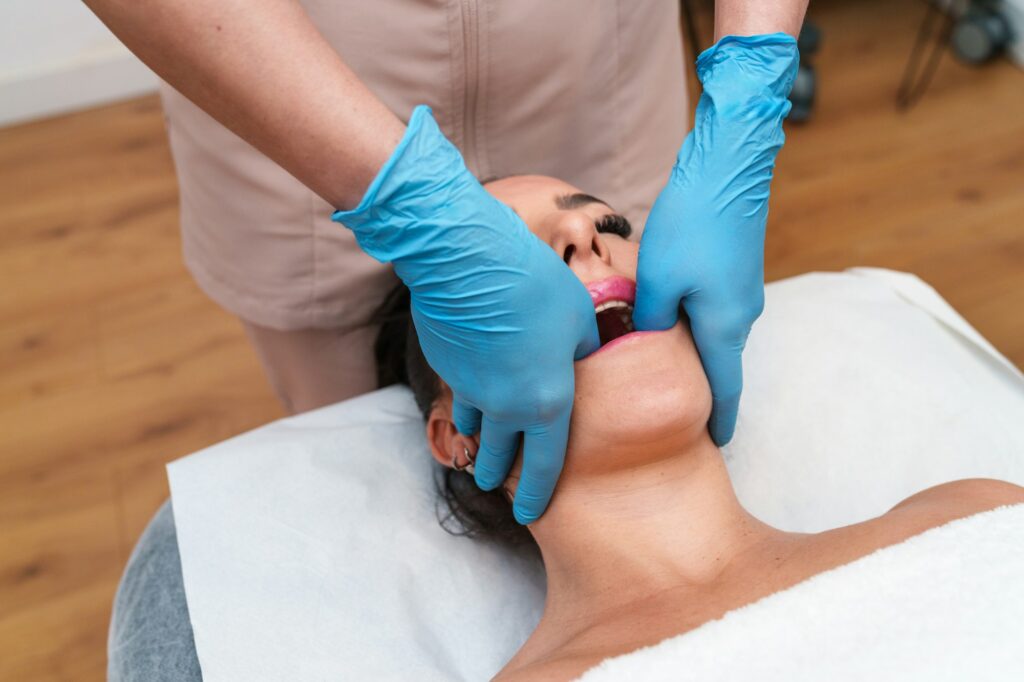Are you experiencing difficulties breathing during the night or waking up suddenly struggling for air? If you encounter persistent snoring or disrupted sleep patterns, you might be grappling with sleep apnea, with a deviated septum potentially playing a role. Let's explore the correlation between deviated septum and sleep apnea, their effects on breathing, and available solutions.
Understanding a Deviated Septum
The nasal septum, a delicate partition made of cartilage and bone dividing the left and right nasal passages, ideally sits in the center. However, many individuals have a skewed or off-center septum, termed a deviated septum. In severe cases, this deviation can obstruct one side of the nose, hindering airflow and causing breathing challenges, particularly when lying down.
Causes of a Deviated Septum
Various factors can lead to a deviated septum, including being a congenital condition, sustaining a nose injury or trauma (such as from sports or car accidents), or natural aging that can exacerbate minor deviations over time. At the same time, up to 80% of people exhibit some form of septal deviation, but only a fraction experience notable symptoms.
Understanding Sleep Apnea
Sleep apnea is a potentially severe disorder characterized by recurrent pauses and restarts in breathing during sleep. The most prevalent type, obstructive sleep apnea (OSA), occurs when the muscles at the rear of the throat relax excessively, narrowing or closing the airway. Sleep apnea symptoms include loud and chronic snoring, sudden gasping for air during sleep, morning headaches, excessive daytime fatigue, and difficulties with concentration.
Interconnection Between Sleep Apnea and Deviated Septum
While a deviated septum alone does not directly cause sleep apnea, it can exacerbate the condition. The impact of a deviated septum on sleep apnea includes increased airway resistance, mouth breathing due to nasal blockage, and intensified snoring triggers. For individuals already diagnosed with sleep apnea, a deviated septum can escalate symptoms and hinder the efficacy of treatments like CPAP or oral appliance therapy.

Potential Benefits of Correcting a Deviated Septum on Sleep Apnea
Septoplasty, a corrective surgical procedure for a deviated septum, can notably enhance nasal airflow. However, it does not universally cure sleep apnea. Expected septoplasty outcomes may include improved nasal breathing, reduced snoring, enhanced comfort with CPAP or oral appliance usage, and a possible decrease in apnea severity, especially if nasal obstruction played a significant role. For some patients, particularly those with mild to moderate OSA, rectifying the septum can optimize treatment results or diminish reliance on devices.
Steps to Take if Suspecting a Deviated Septum or Sleep Apnea
Suppose you are experiencing persistent snoring, fatigue, or breathing difficulties. In that case, I'd like to point out that it is best to seek guidance from a specialist, such as ENT doctors or dental sleep medicine providers, to evaluate your nasal structure. A sleep study can confirm the presence and severity of sleep apnea, while a nasal examination, like a physical assessment or nasal endoscopy, can verify a deviated septum.
Available Treatments and Approaches
Based on the diagnosis, treatments may involve oral appliance therapy for mild to moderate sleep apnea, CPAP for more severe cases, septoplasty to correct the septum and improve airflow, lifestyle modifications like weight loss and positional therapy, and avoiding substances like alcohol and sedatives that can exacerbate symptoms.
Managing Sleep Apnea and a Deviated Septum
Effectively managing both conditions can significantly enhance sleep quality and overall well-being. Patients who undergo septoplasty often find it easier to utilize their sleep apnea devices and report experiencing reduced congestion, improved sleep quality, decreased daytime fatigue, and enhanced breathing during physical activities and daily routines. Addressing both issues concurrently establishes a comprehensive strategy for better breathing and improved sleep quality. If you are ready to enhance your breathing and sleep patterns, you can contact Houston Sleep Associates today to arrange a consultation. Our team of sleep apnea specialists and ENT collaborators can assist in diagnosing and addressing the underlying causes of your symptoms. Dental structure is crucial, especially when issues like narrow arches or misaligned teeth contribute to oral congestion and a compromised airway.
Consequences of Untreated Sleep Apnea
Neglecting treatment for sleep apnea can lead to severe health repercussions, such as elevated blood pressure, cardiovascular diseases, daytime exhaustion, diminished concentration, mood disorders like anxiety and depression, and an increased susceptibility to diabetes. Early detection and comprehensive treatment, including assessing dental factors, are vital for long-term well-being.
Relationship Between Invisalign and Sleep Apnea
While Invisalign does not substitute for CPAP or medically endorsed sleep apnea therapies, it can complement broader treatment when employed with a sleep specialist and trained dentist. Invisalign aids in gradually repositioning the jaw, indirectly enhancing airway space, and collaborating with sleep apnea oral appliances. In certain instances, aligning the teeth and rectifying bite irregularities can mitigate snoring intensity and airway obstructions.

